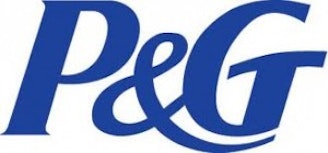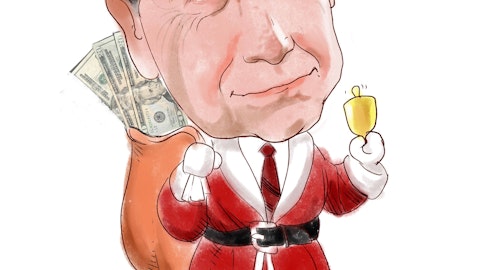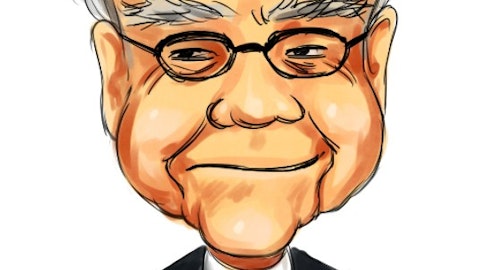
Since the fall is apparently a reaction to the company’s Q3 figures, let us have a brief look at them.
Third quarter 2013 earnings
Income for the January to March 2013 quarter rose 6% – to $2.57 billion or $0.88 per share from $2.41 billion or $0.82 per share reported in the same quarter in 2012. This could have been better but for the restructuring charge due to the devaluation of the Venezuelan currency. If we do not take than into account, the EPS calculates at $0.99, whereas analysts were expected $0.96. Revenue was up only 2% at $20.60 billion against expectations of $20.72 billion.
Nevertheless, when we see the nine months of fiscal 2013, the picture is much more assuring. Operating income for the nine months ended March 31, 2013 rose 16% and net earnings by 32% as compared to the nine months of fiscal 2012. However, The Procter & Gamble Company (NYSE:PG) has underperformed if we compare it with its closest competitor, Kimberly Clark Corp (NYSE:KMB).
Kimberly Clark Corp (NYSE:KMB) reported total revenue of $5.32 billion for the quarter ended March 31, 2013. Although revenue was up only 1.5% from the same quarter prior year, the company’s net income rose by more than 13% –$531 million or $1.37 per share, beating market expectation by 14 cents a share. Following strong earnings, the company’s share price hit an all time high of $106.54.
Another consumer goods sector company, The Clorox Company (NYSE:CLX) just missed the market estimate of $1.06 per share when it released its figures for the quarter ended March 31, 2012. On revenues of $1.41 billion, the company posted a net income of $133 million or $1.01 per share
The different perspective
This is the perspective of a long term investor.
Underperformance as compared to competitors and a smaller earnings surprise worked as a trigger and gave traders a reason to pull the stock down. It is also being speculated that Bill Ackman, a hedge fund manager with 1% stake in P&G, could start a proxy fight before the company’s annual general meeting this fall for replacing the current CEO.
P&G has a long history of dividend payouts and a dividend payout ratio of 54.31%, meaning that it distributes that much out of its earnings to shareholders. Buying at such dips in stock price of dividend paying companies will eventually increase the average dividend yield that a long term investor, more so in the case of P&G considering that the company has been increasing dividend every year.
Increasing shareholder value
Besides, there is also another aspect of the earnings presentation that has probably not got the attention it deserves.
The company had earlier announced that it will spend $4 billion to $6 billion on share buybacks. Initially, the figure announced was at the lower end, $4 billion. During its earnings call the company has now fixed that figure at the upper end, $6 billion. This can only increase shareholder value and add a growth dimension to an extremely stable stock like P&G.
Conclusion
Anyone who bought the stock ten years ago at around the level of $45, has seen his/her investment give an almost 100% return –36% ($16.09) by way of dividends and an appreciation of 72%. If we take into account reinvestment of cash dividends received and the stock split of June 2004 into account, this translates into a return exceeding 300%.
It is my considered opinion that diversification, stability and growth are the three attributes of a strong portfolio. P&G is one of those stocks that should be a part the portfolio of every long term investor who subscribes to this theory.
Forget how the stock reacts to earnings, just go ahead and accumulate the stock at every substantial dip. You will see that traders pulling the stock down are actually doing a good service to you.
The article This Underperforming Stock Is Still a Strong Buy originally appeared on Fool.com.
Copyright © 1995 – 2013 The Motley Fool, LLC. All rights reserved. The Motley Fool has a disclosure policy.


